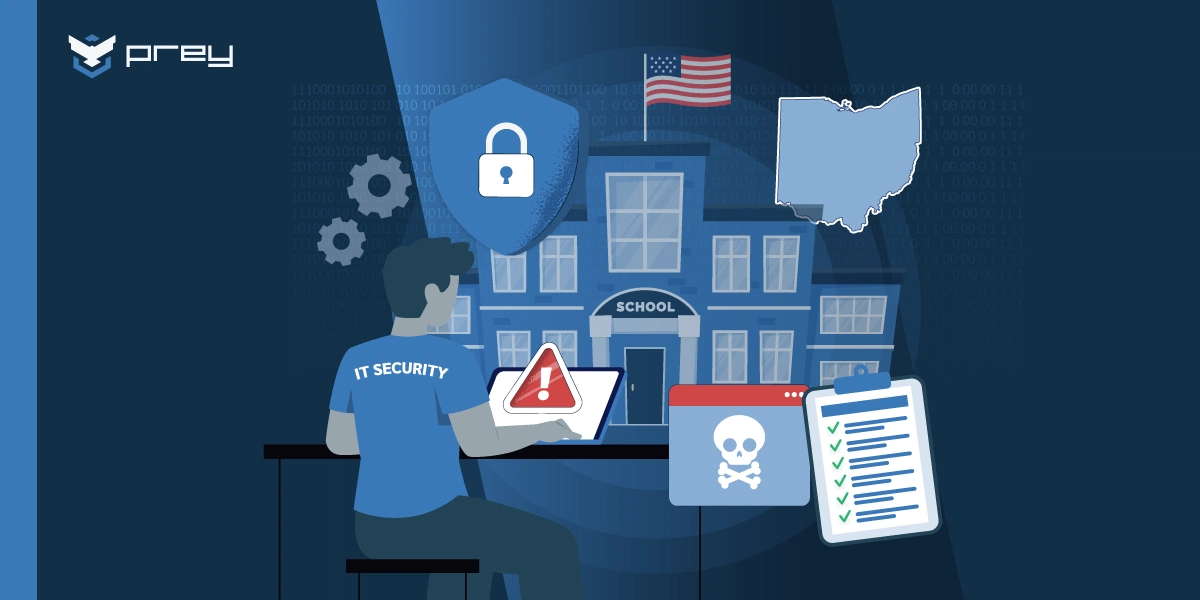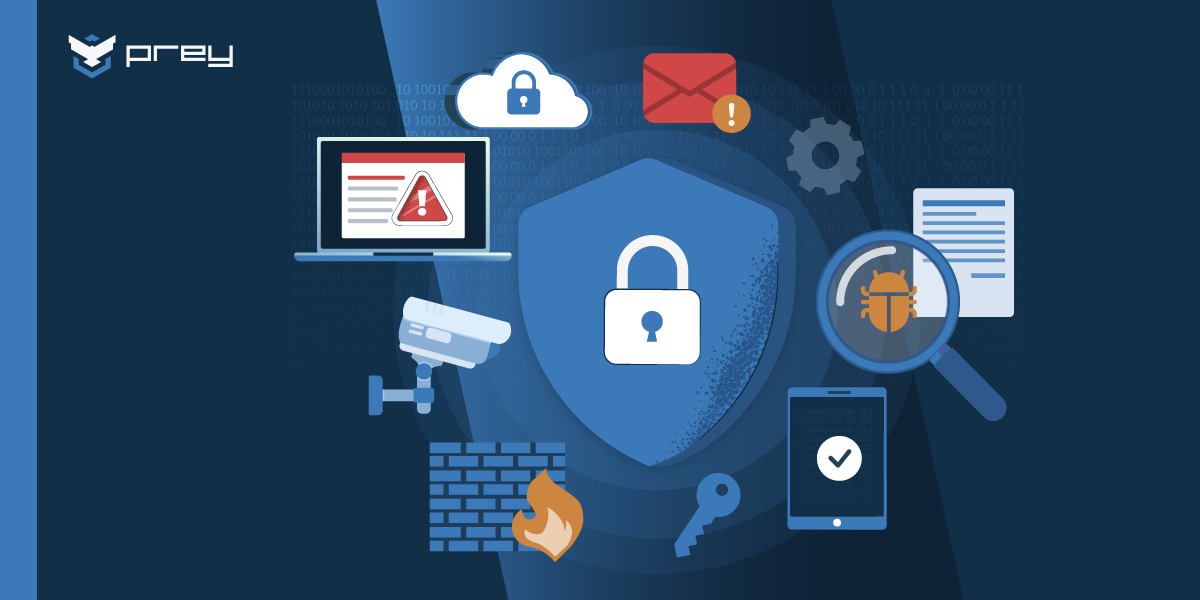With the current landscape, implementing robust cybersecurity measures is essential to protect against potential threats and vulnerabilities. However, navigating the cybersecurity maze can be daunting, especially for K-12 institutions with limited resources and expertise in the field.
This is where established frameworks such as the National Institute of Standards and Technology (NIST) and the Center for Internet Security (CIS) play a crucial role.
Both NIST and CIS offer comprehensive guidelines and best practices tailored to the unique needs of K-12 education settings.
These frameworks provide structured approaches to cybersecurity, helping schools assess their current security posture, identify areas for improvement, and implement effective risk mitigation strategies.
In this comparative guide, we will discover the significance of cybersecurity in the K-12 education environment and explore the impact of IT frameworks, specifically NIST and CIS, on enhancing cybersecurity posture.
Understanding the Frameworks
NIST Framework

The NIST Cybersecurity Framework (CSF) is a widely recognized framework developed by the National Institute of Standards and Technology (NIST) to help organizations manage and improve their cybersecurity risk management processes.
The NIST Cybersecurity Framework provides a structured approach to cybersecurity risk management, emphasizing five core functions: Identify, Protect, Detect, Respond, and Recover.
These functions are designed to help organizations understand, manage, and mitigate cybersecurity risks effectively. Also, this framework consists of guidelines, best practices, and standards that organizations can use to develop, implement, and improve their cybersecurity programs.
Learn how our security solution may help in leveraging NIST in your organization.
Benefits for K-12 IT Teams:
Comprehensive Approach: The NIST CSF provides a comprehensive and structured approach to cybersecurity risk management, covering all aspects of the cybersecurity lifecycle. This helps K12 IT teams develop a holistic understanding of cybersecurity risks and implement effective controls to address them.
Flexibility: The framework is flexible and scalable, allowing K12 institutions to tailor its implementation to their specific needs, resources, and risk profiles. This flexibility enables K12 IT teams to prioritize cybersecurity efforts based on their unique requirements and constraints.
Government Endorsement: The NIST CSF is endorsed by the U.S. government and widely adopted across various sectors and industries. This endorsement provides K12 IT teams with confidence in the framework's effectiveness and alignment with established cybersecurity best practices and standards.
CIS Control Framework

The Center for Internet Security (CIS) Controls is a set of cybersecurity best practices developed by the Center for Internet Security to help organizations bolster their cybersecurity defenses.
At its core, the CIS Controls framework consists of a prioritized set of security actions, organized into 18 controls, that collectively form the foundation of an effective cybersecurity program. These controls are based on real-world cyber-attacks and expert insights, making them highly actionable and adaptable to various IT environments.
Benefits for K-12 IT Teams:
Simplicity: CIS Controls provide a straightforward and practical approach to cybersecurity, making it easier for K-12 IT teams to understand and implement effective security measures. By focusing on actionable steps and best practices, the controls simplify the complex task of cybersecurity risk management.
Focus on Critical Security Controls: The CIS Controls prioritize critical security measures based on their effectiveness at mitigating common cyber threats. This focus helps K-12 IT teams allocate resources efficiently and prioritize efforts on the most impactful security controls, ensuring maximum protection against prevalent cyber risks.
Community-Driven Updates: The CIS Controls are regularly updated based on input from a diverse community of cybersecurity experts, practitioners, and organizations. This ensures that the controls remain relevant and effective against emerging threats and evolving cybersecurity challenges. For K-12 IT teams, this means access to up-to-date and vetted security guidance tailored to their specific needs and environment.
Comparison and Suitability for K-12 IT Teams
The NIST CSF provides a comprehensive framework for managing cybersecurity risks across five core functions. It emphasizes a risk-based approach, focusing on understanding and managing cyber risks to achieve organizational cybersecurity objectives.
However, implementing the NIST framework can be complex and resource-intensive, which may pose challenges for K-12 schools with limited IT resources. Additionally, the broad nature of the framework may necessitate extra guidance for specific actions and implementations.
The CIS Controls on the other hand ****offer a practical and actionable set of cybersecurity best practices organized in 18 security Controls. This framework provides detailed and prioritized security controls, simplifying the process for schools to understand and implement specific security actions. It also offers practical and straightforward guidance, making it more accessible for organizations with limited cybersecurity expertise. on
Comparison and Suitability for K-12 IT Teams
Whether you choose NIST or CIS, IT teams need to assess these three different factors before considering:
- Resource Availability: If the K-12 IT team is working with limited resources, the prescriptive nature of CIS Controls might be more beneficial. Its straightforward approach makes it easier to implement without needing extensive cybersecurity expertise.
- Flexibility Needs: If the school needs a framework that can extensively adapt to its unique risks and processes, the NIST CSF might be more suitable given its flexibility and customizable approach.
- Threat Focus: Schools that are particularly concerned about common and significant threats can use the CIS Controls. These provide direct measures to address these threats, potentially leading to faster risk mitigation.
The answers is…CIS Framework
Deciding between the NIST Cybersecurity Framework (CSF) and the CIS Controls in a K-12 environment largely depends on the specific needs, capabilities, and priorities of the school's IT team. However, we generally recommend starting with the CIS Controls for several key reasons:
- Actionable and Straightforward Implementation: CIS Controls are highly specific and easy to implement, making them particularly beneficial for K-12 schools that may lack large, and specialized cybersecurity teams. Their clear and concise nature allows for straightforward implementation and yields immediate enhancements in security posture.
- Focus on High-Impact Controls: The controls are specifically designed to counter the most common and impactful attacks, an essential measure for protecting the often vulnerable environments of K-12 institutions.
- **Scalability and Flexibility:**The CIS Framework is scalable and flexible, allowing K-12 institutions to tailor its implementation to their specific needs and risk profiles. Whether it's a small rural school or a large urban district, CIS Controls can be adapted to accommodate different environments, ensuring that cybersecurity measures are appropriate and effective across diverse K-12 settings.
- Resource Efficiency: Considering that many K-12 environments operate with limited IT and security resources, the prioritized approach of CIS Controls is beneficial. It focuses efforts on the most critical security actions that yield the highest payoff. Such prioritization allows for more effective management of limited resources.
What About Integrating Both Frameworks?
For schools that can manage it, using both frameworks can provide comprehensive protection. For instance, a school could use the NIST CSF for its overall cybersecurity plan and management, while using the CIS Controls for particular, direct security upgrades. This combined method uses the advantages of both frameworks—flexibility in strategy from NIST and exactness in tactics from CIS.
Conclusion
Both NIST and CIS provide comprehensive cybersecurity frameworks for K-12 educational settings. NIST offers a flexible, government-endorsed approach that can be complex and resource-intensive. In contrast, CIS provides a straightforward, practical approach that focuses on critical security controls and is frequently updated.
Considering the challenges faced by K-12 IT teams, such as resource availability, the need for flexibility, and threat focus, the CIS framework is more suitable for K-12 institutions due to its practicality, scalability, and cost-effectiveness. Nonetheless, a combination of both frameworks can offer comprehensive protection.
Cybersecurity is an ongoing process. As threats evolve, our measures should too. K-12 IT teams need to continuously learn and improve to effectively protect digital assets.






